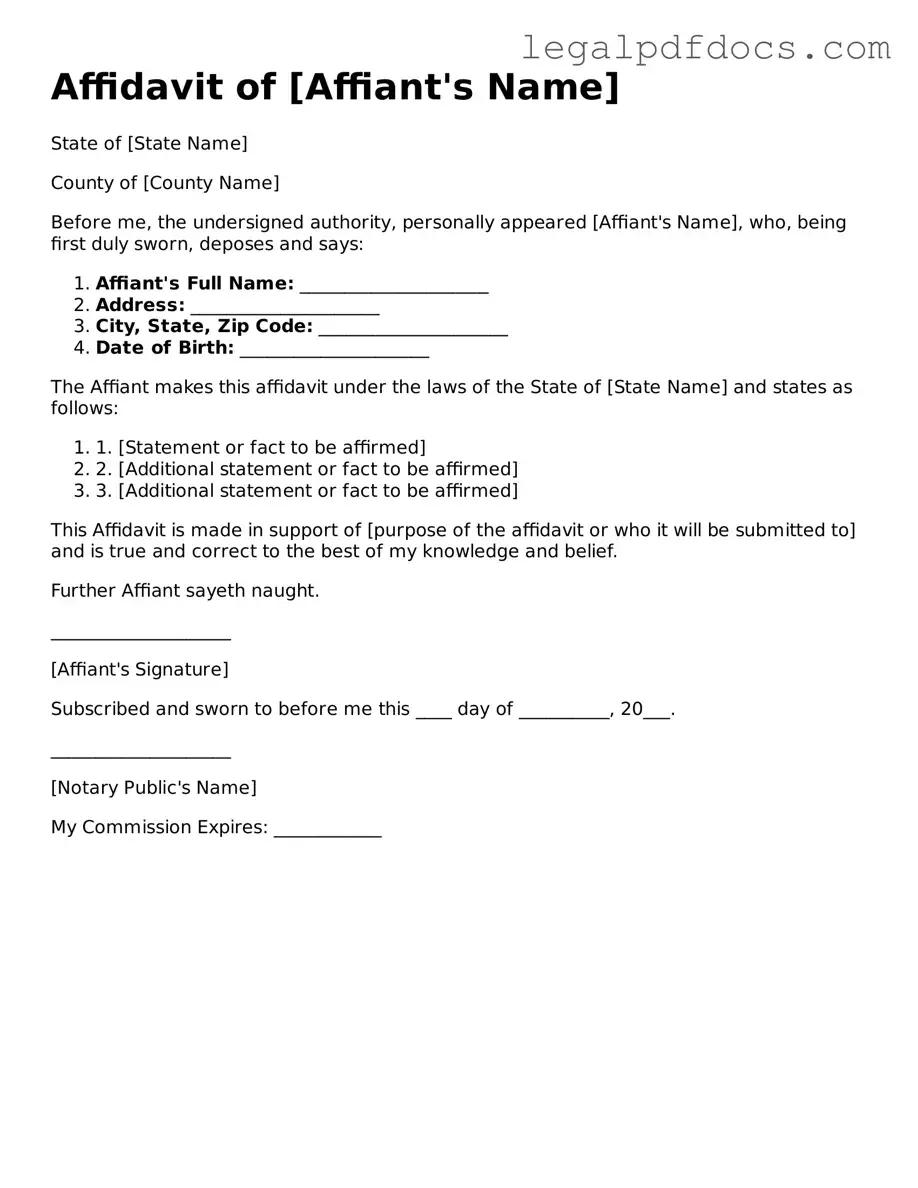When navigating legal matters, understanding the tools at your disposal can make all the difference. One such tool is the affidavit form, a powerful document that serves as a written statement made under oath. Typically, this form is used to present facts in court or during legal proceedings, ensuring that the information provided is truthful and can be relied upon. The affidavit must be signed by the person making the statement, known as the affiant, and usually requires notarization to validate its authenticity. This process not only adds a layer of credibility but also emphasizes the seriousness of the information being presented. Various types of affidavits exist, each serving specific purposes, from supporting claims in a lawsuit to providing proof of identity or financial status. Understanding how to properly complete and utilize an affidavit can empower individuals to effectively communicate their circumstances and support their legal positions.
